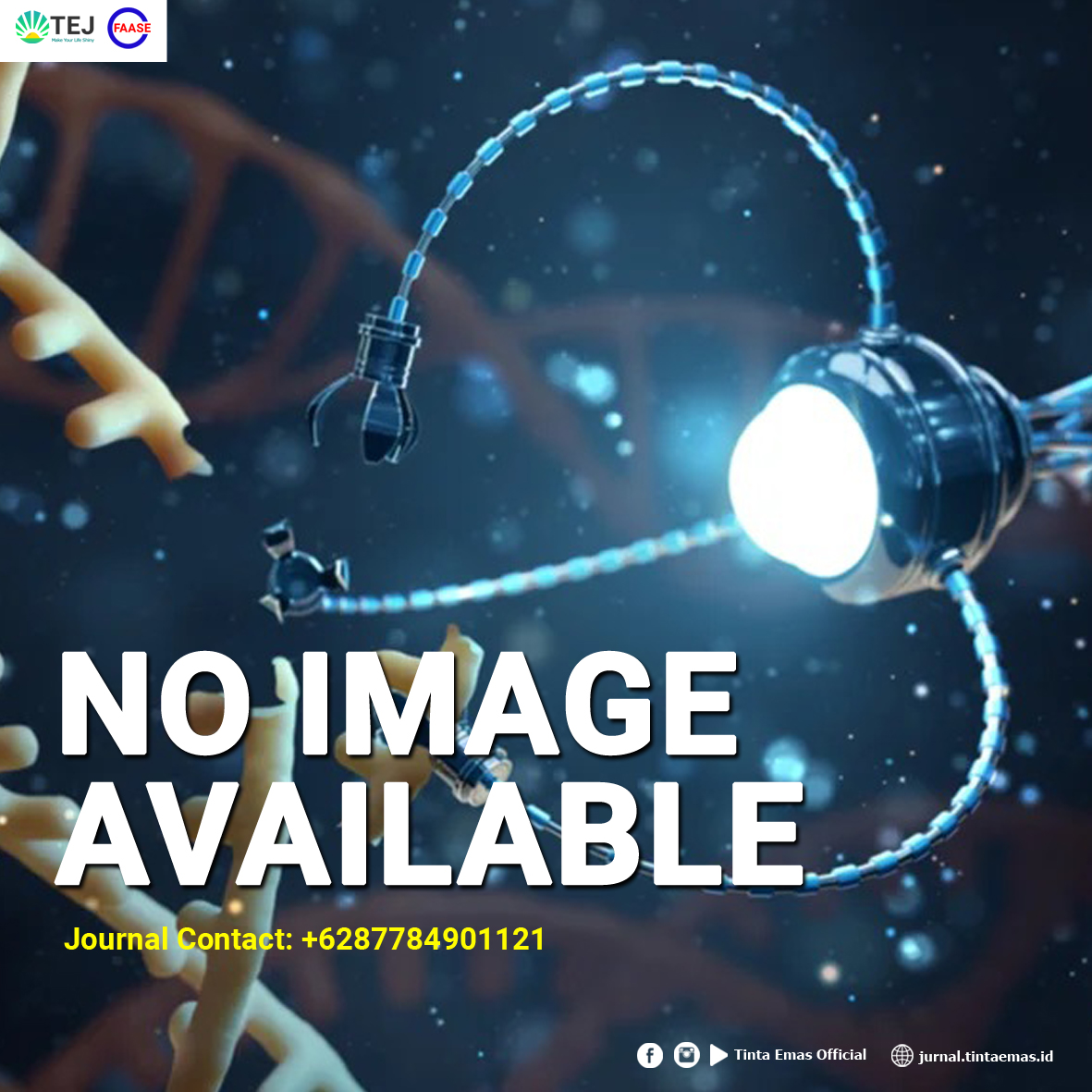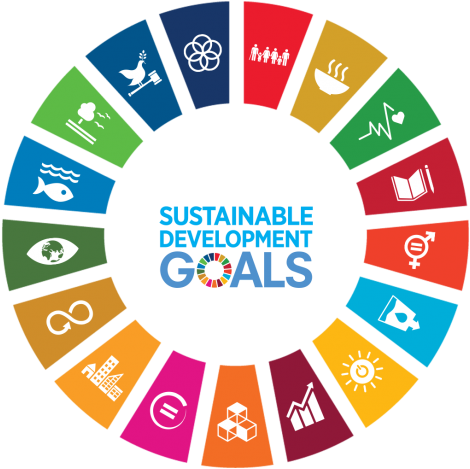The Effect of Addition of Onggok as a Mixed Material in the Making of Complete Feed Silage on the Digestibility of BK, BO and NH3 production In-Vitro
DOI:
https://doi.org/10.59535/faase.v1i2.180Keywords:
Onggok, Silage, Complete Feed, In-Vitro, KcBK, KcBO and NH3Abstract
Onggok adalah hasil limbah tapioka dengan kadar protein dan lemak kasar rendah namun memiliki kadar karbohidratnya tinggi. Onggok sendiri merupakan hasil samping dari industri pembuatan tepung tapioka yang berasal dari ubi kayu atau singkong. Penelitian ini berfokus pada pengaruh penambahan level onggok sebagai bahan campuran dalam pembuatan silase pakan lengkap terhadap kecernaan BK, BO dan produksi NH3 secara In-Vitro. Penelitian ini bertujuan untuk mengetahui nilai kandungan kecernaan bahan kering (KcBK), kecernaan bahan organik (KcBO) dan nilai NH3 dalam pembuatan pakan lengkap dengan penambahan level onggok sebagai bahan campuran dalam pembuatan silase secara in vitro. Metode yang digunakan adalah percobaan dengan RAK (Rancangan Acak Kelompok) yang terdiri dari 4 perlakuan dan 3 ulangan. Data yang diperoleh akan dianalisi menggunakan ANOVA untuk mengetahui dan mengevaluasi pengaruh perlukaan yang digunakan dan apabila hasil terdapat perbedaan akan dianalisis lanjutan menggunakan Duncan. Hasil penelitian menunjukkan bahwa dengan perlakuan menggunakan penambahan level onggok tidak memberikan pengaruh yang nyata (P>0,05) pada kecernaan bahan kering, kecernaan bahan organik dan NH3. Hasil rataan Kecernaan bahan kering (KcBK) berturut-turut pada P0 atau perlakuan tanpa pemberian onggok mencapai 50,93%. Sedangkan KcBK setelah penambahan onggok direpresentasikan dengan perlakuan P1, P2, dan P3 dengan besar kecernaan bahan kering secara berurutan adalah 51,66; 52,55; dan 53,64%. Hasil rataan NH3 berturut-turut adalah 3,61d ± 0,26 mM untuk P0; 3,44c ± 0,20 mM untuk P1; 3,33b ± 0,13 mM untuk P2; dan 3,22a ± 0,14 mM untuk P3.
Downloads
References
D. Aziz, ‘The activity of modern agricultural technique, mina paddy, on salt water and the income of farmers in west matang raya-north aceh regency’, in IOP Conference Series: Materials Science and Engineering, IOP Publishing, 2020, p. 012004.
J. G. Ingersoll, ‘Thermophilic co-fermentation of wood wastes and high in nitrogen animal manures into bio-methane with the aid of fungi and its potential in the USA’, Energies, vol. 13, no. 16, p. 4257, 2020.
R. Yulianto, T. D. Xuan, T. D. Khanh, T. N. Minh, T. T. T. Anh, and C. T. Huong, ‘Evaluation of Dominant Plant Species for Animal Feeds in Grazing Areas’, International Journal of Agriculture, Forestry and Fisheries, vol. 5, no. 3, pp. 29–33, 2017.
J. Fernández-Mateo and A. J. Franco-Barrera, ‘Animal Welfare for Corporate Sustainability: The Business Benchmark on Farm Animal Welfare’, Journal of Sustainability Research, vol. 2, no. 3, 2020.
F. Canon, M.-B. Maillard, G. Henry, A. Thierry, and V. Gagnaire, ‘Positive interactions between lactic acid bacteria promoted by nitrogen-based nutritional dependencies’, Applied and Environmental Microbiology, vol. 87, no. 20, pp. e01055-21, 2021.
W. D. Astuti, Y. Widyastuti, R. Ridwan, and E. Yetti, ‘Quality of Vegetable Waste Silages Treated with Various Carbohydrate Sources’, Med Pet, vol. 36, no. 2, pp. 120–125, Aug. 2013, doi: 10.5398/medpet.2013.36.2.120.
F. Ilham and M. Mukhtar, ‘Perbaikan produktivitas kambing kacang melalui pelatihan pembuatan pakan silase bagi warga di Kecamatan Bone Pantai Kabupaten Bone Bolango’, ABDIMAS: Jurnal Pengabdian Kepada Masyarakat, vol. 10, no. 02, 2017.
N. L. Bragazzi et al., ‘Fasting and its impact on skin anatomy, physiology, and physiopathology: A comprehensive review of the literature’, Nutrients, vol. 11, no. 2, p. 249, 2019.
B. Bakrie, U. Sente, K. Mayasari, and R. F. Syah, ‘Effectiveness of Accelerator and Inoculum in Fermentation of Goat’s Rumen Contents as Animal Feed Ingredients’, IOP Conf. Ser.: Earth Environ. Sci., vol. 119, no. 1, p. 012008, Feb. 2018, doi: 10.1088/1755-1315/119/1/012008.
Q. Chen, Y. Shi, G. Chen, and M. Cai, ‘Enhanced mechanical and hydrophobic properties of composite cassava starch films with stearic acid modified MCC (microcrystalline cellulose)/NCC (nanocellulose) as strength agent’, International journal of biological macromolecules, vol. 142, pp. 846–854, 2020.
W. Wachdijono and R. Julhan, ‘Analysis of added value in dry sea fish agroindustry in Gebang Sub District, Cirebon Regency’, J. Phys.: Conf. Ser., vol. 1360, no. 1, p. 012033, Oct. 2019, doi: 10.1088/1742-6596/1360/1/012033.
P. K. Tahuk, G. F. Bira, and H. Taga, ‘Physical Characteristics Analysis of Complete Silage Made of Sorghum Forage, King Grass and Natural Grass’, IOP Conf. Ser.: Earth Environ. Sci., vol. 465, no. 1, p. 012022, Mar. 2020, doi: 10.1088/1755-1315/465/1/012022.
T. Fitriani, W. Fauziah, A. R. Tarmidi, and I. Hernaman, ‘Onggok mix enriched with papaya (Carica papaya L) extract has good potential as ruminants ration.’, Jurnal Veteriner, vol. 21, no. 3, pp. 408–414, 2020, Accessed: Jan. 31, 2024. [Online]. Available: https://www.cabdirect.org/cabdirect/abstract/20210071188
I. Sangadji, C. W. Patty, J. D. Sitorus, and N. G. Kilmanun, ‘Effect of Different Energy Sources on Silage of Dwarf Elephant Grass (Pennisetum Purpureum Cv. Mott) on Digestibility and Rumen Fluid Fermentation Parameters’, Jurnal Penelitian Pendidikan IPA, vol. 9, no. 9, Art. no. 9, Sep. 2023, doi: 10.29303/jppipa.v9i9.4988.
F. C. Cowley et al., ‘Greater farmer investment in well-formulated diets can increase liveweight gain and smallholder gross margins from cattle fattening’, Livestock Science, vol. 242, p. 104297, Dec. 2020, doi: 10.1016/j.livsci.2020.104297.
N. Rahmawati, E. F. Lisnanti, M. Muladno, and A. Atabany, ‘Potency of local feed ingredients and ability of livestock to use the feed: An in-vitro study’, J Adv Vet Anim Res, vol. 7, no. 1, pp. 92–102, Dec. 2019, doi: 10.5455/javar.2020.g398.
F. Fatmawati, ‘Fermentation of Jatropha kernel cake (Jatropha curcas L.) using variaties of fungi on its chemical compositions, concentration of phorbolester, and digestibility’, International Seminar on Tropical Animal Production (ISTAP), no. 0, Art. no. 0, Nov. 2017, Accessed: Jan. 31, 2024. [Online]. Available: https://journal.ugm.ac.id/istapproceeding/article/view/30416
H. T. Duguma, M. Mamuye, G. Berecha, and J. V. D. Kolk, ‘Purdue improved crop storage bag for kocho fermentation; Ethiopian traditional fermented food from Enset (Ensete ventricosum)’, Heliyon, vol. 9, no. 9, p. e19301, Sep. 2023, doi: 10.1016/j.heliyon.2023.e19301.
D. A. Mucra, M. Radiallah, and A. E. Harahap, ‘Nutrient Value of Pineapple Peel Silage with the Addition of Various Carbohydrate Sources’, Jurnal Ilmu Ternak Universitas Padjadjaran, vol. 23, no. 1, Art. no. 1, Jul. 2023, doi: 10.24198/jit.v23i1.43583.
Y. Xie et al., ‘Effects of the Application of Lactobacillus plantarum Inoculant and Potassium Sorbate on the Fermentation Quality, In Vitro Digestibility and Aerobic Stability of Total Mixed Ration Silage Based on Alfalfa Silage’, Animals, vol. 10, no. 12, Art. no. 12, Dec. 2020, doi: 10.3390/ani10122229.
C. Kaewpila et al., ‘Improving ensiling characteristics by adding lactic acid bacteria modifies in vitro digestibility and methane production of forage-sorghum mixture silage’, Sci Rep, vol. 11, no. 1, Art. no. 1, Jan. 2021, doi: 10.1038/s41598-021-81505-z.
N. T. M. Suong, S. Paengkoum, A. Z. M. Salem, P. Paengkoum, and R. A. P. Purba, ‘Silage Fermentation Quality, Anthocyanin Stability, and in vitro Rumen Fermentation Characteristic of Ferrous Sulfate Heptahydrate-Treated Black Cane (Saccharum sinensis R.)’, Frontiers in Veterinary Science, vol. 9, 2022, Accessed: Jan. 31, 2024. [Online]. Available: https://www.frontiersin.org/articles/10.3389/fvets.2022.896270
L. He et al., ‘Ensiling characteristics, proteolysis and bacterial community of high-moisture corn stalk and stylo silage prepared with Bauhinia variegate flower’, Bioresource Technology, vol. 296, p. 122336, Jan. 2020, doi: 10.1016/j.biortech.2019.122336.
Y. Wang et al., ‘Improvement of feed intake, digestibility, plasma metabolites, and lactation performance of dairy cows fed mixed silage of sugar beet pulp and rice straw inoculated with lactic acid bacteria’, Journal of Dairy Science, vol. 105, no. 1, pp. 269–280, Jan. 2022, doi: 10.3168/jds.2021-20494.
E. H. Horst, S. López, M. Neumann, F. J. Giráldez, and V. H. Bumbieris Junior, ‘Effects of Hybrid and Grain Maturity Stage on the Ruminal Degradation and the Nutritive Value of Maize Forage for Silage’, Agriculture, vol. 10, no. 7, Art. no. 7, Jul. 2020, doi: 10.3390/agriculture10070251.
N. Hanifah, Y. F. Achmad, A. Humaira, and S. I. O. Salasia, ‘Red ginger-extract nanoemulsion modulates high blood pressure in rats by regulating angiotensin-converting enzyme production’, Veterinary World, vol. 14, no. 1, p. 176, 2021.
L. Cui et al., ‘Corn Cob Lignin-based Porous Carbon Modified Reduced Graphene Oxide Film For Flexible Supercapacitor Electrode’, Journal of Wood Chemistry and Technology, vol. 39, no. 5, pp. 343–359, Sep. 2019, doi: 10.1080/02773813.2019.1623259.
A. Pramana et al., ‘Counseling and Socialization About Making Cow Candy as Supplementary Feed for Ruminants’, Journal of Community Engagement Research for Sustainability, vol. 2, no. 5, pp. 210–216, 2021.
T. Tondy, I. N. E. Lister, A. N. Nasution, and S. Lie, ‘Antihyperlipidemia Activity of Sygyzium Polyanthum Ethanol Extract on Benzene Induced Rats’, in 2021 IEEE International Conference on Health, Instrumentation & Measurement, and Natural Sciences (InHeNce), IEEE, 2021, pp. 1–5.
E. Nurdin, ‘The Effect of the Gambir (Uncaria gambir (Hunt.) Roxb.) Leaves Waste and White Turmeric (Curcuma zedoaria) for The Productivity, Antioxidant Content and Mastitis Condition of The Fries Holland Dairy Cows’, in IOP Conference Series: Earth and Environmental Science, IOP Publishing, 2018, p. 012041.

Downloads
Published
How to Cite
Issue
Section
License
Copyright (c) 2023 Anissa Riani, M. Danesh Mesgaran, M Wanapat

This work is licensed under a Creative Commons Attribution 4.0 International License.
By submitting a manuscript to Frontier Advances in Applied Science and Engineering (FAASE), the author(s) agree to the following terms:
-
Copyright: The author(s) retain copyright to their work, granting Frontier Advances in Applied Science and Engineering (FAASE) the right to publish it. Articles are licensed under a Creative Commons Attribution 4.0 International License (CC BY).
-
License Grant: The CC BY license allows others to share and adapt the work for any purpose, even commercially, provided proper attribution is given to the original author(s) and the source, a link to the Creative Commons license is provided, and any changes made are indicated.
-
Author's Rights: Authors are allowed to enter into separate, additional contractual arrangements for the non-exclusive distribution of the journal's published version of the work, with proper acknowledgment of its initial publication in Frontier Advances in Applied Science and Engineering (FAASE).
-
Permissions: Reproduction, posting, transmission, or other distribution or use of the final published article, in whole or in part, requires prior written permission from Frontier Advances in Applied Science and Engineering (FAASE) and the respective author(s).
-
Attribution: Proper attribution must be given to the original author(s) and the source, indicating that the work was originally published in Frontier Advances in Applied Science and Engineering (FAASE) with a link to the published article.
-
No Warranty: The journal and its editorial team make no representations or warranties regarding the accuracy, completeness, or fitness for a particular purpose of the published work.
-
Dispute Resolution: Any disputes arising from the use of the licensed material shall be governed by the laws of [Jurisdiction] without regard to conflicts of law principles.
By submitting a manuscript to FAASE, the author(s) agree to abide by these license terms and grant the necessary rights to Frontier Advances in Applied Science and Engineering (FAASE) for the publication and dissemination of the submitted work.










